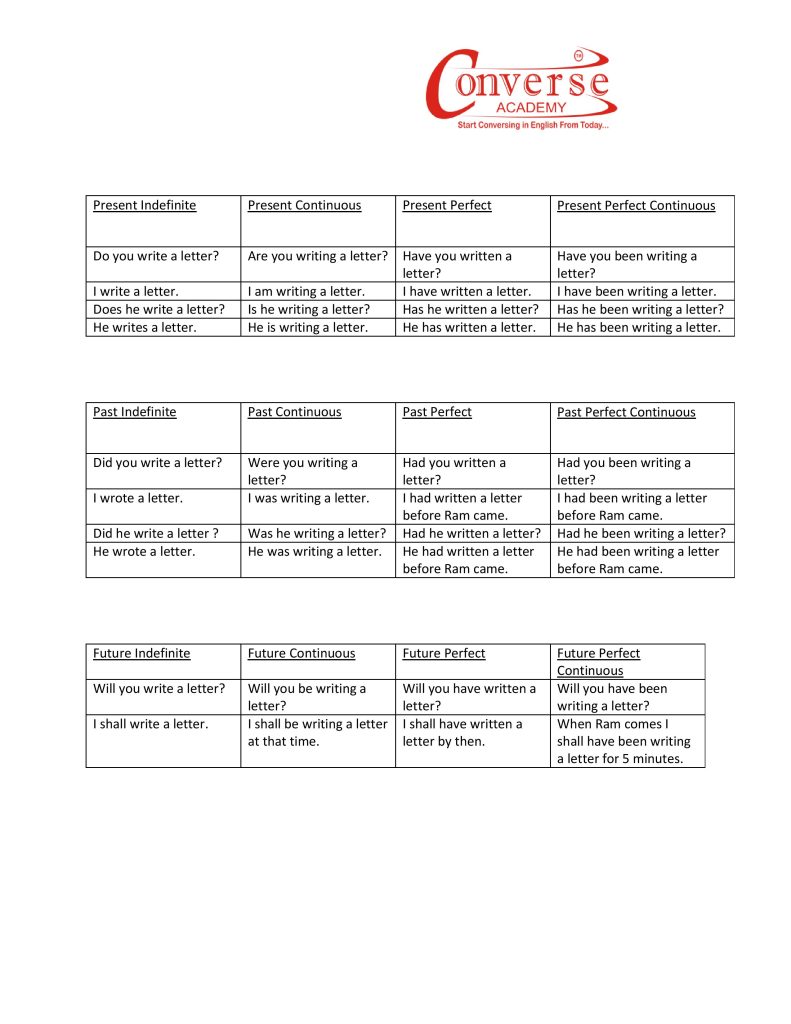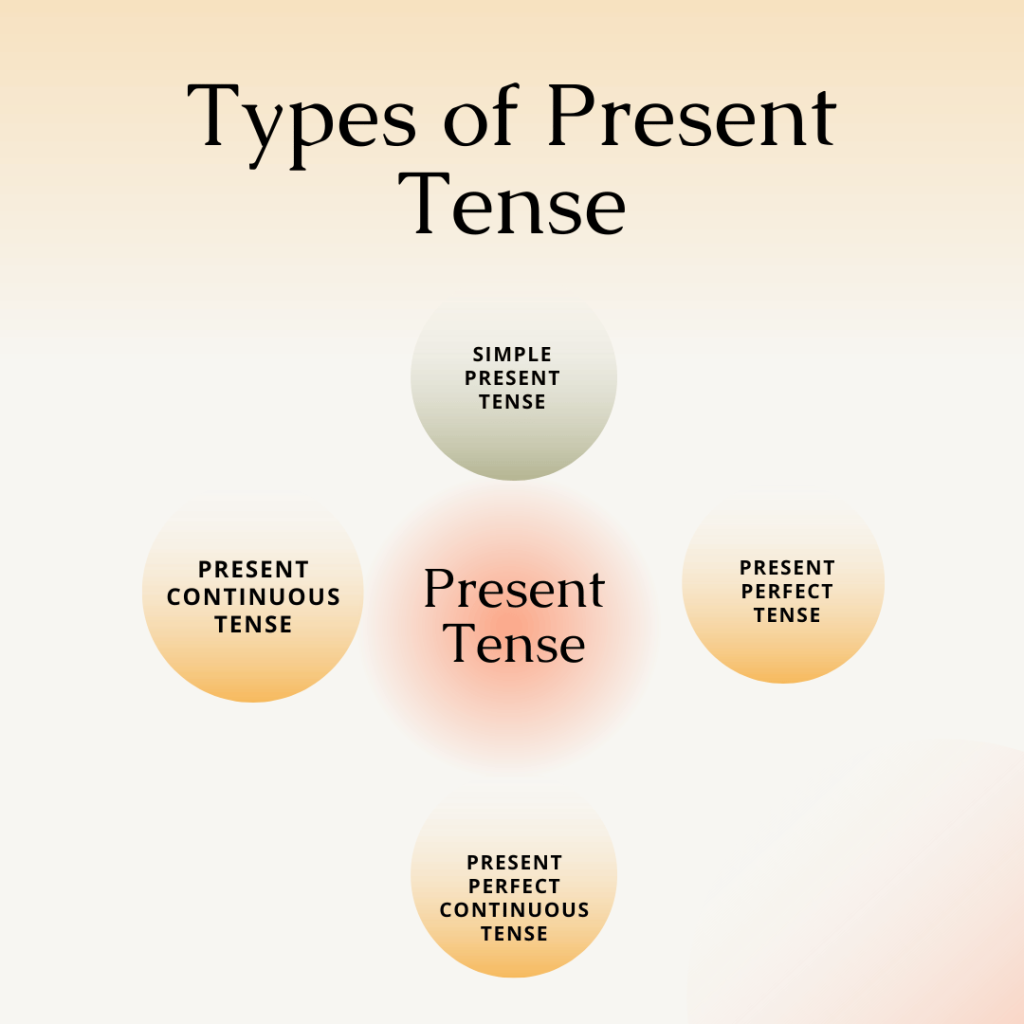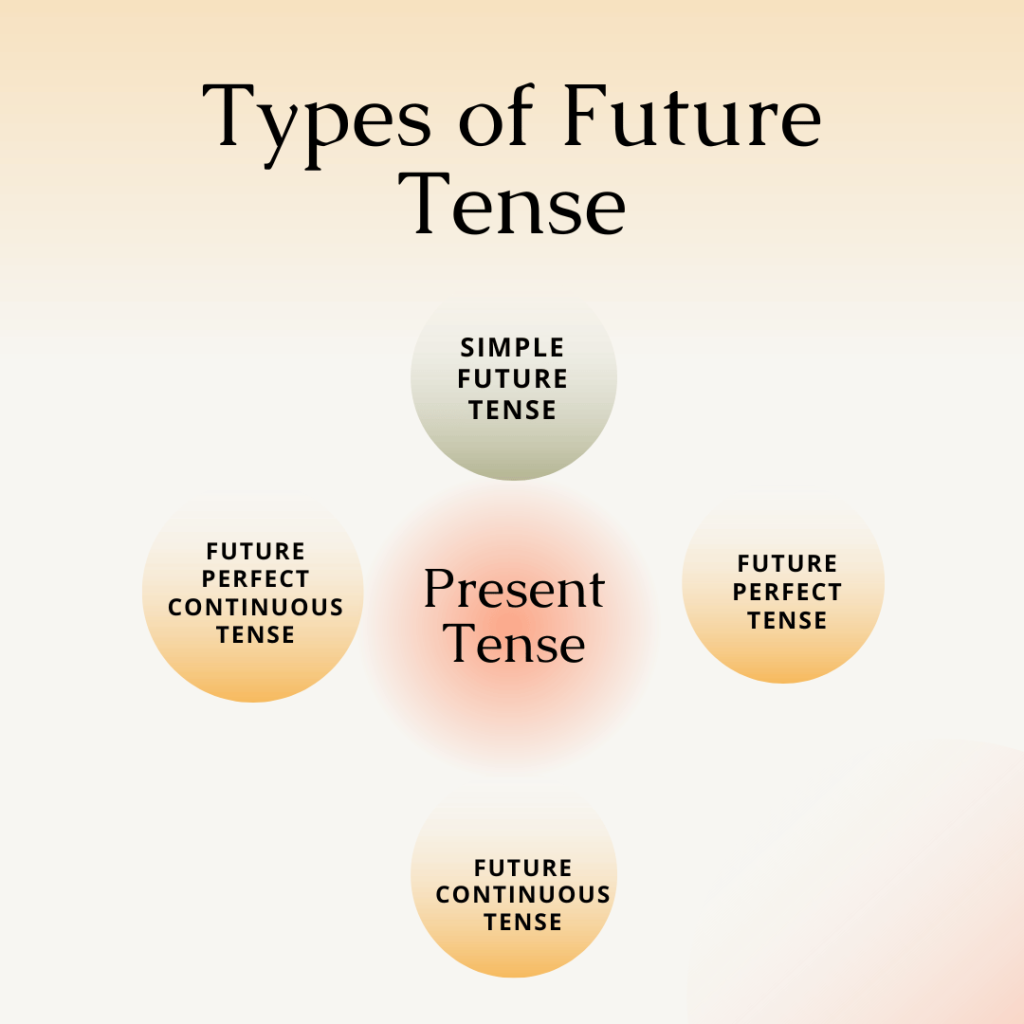Tenses and Spoken English. Tenses are often referred to as the “spinal cord” of the English language because they are the backbone of the language, providing structure and coherence to sentences and paragraphs. Tenses are used to indicate the time frame in which an action or event takes place, and they help to clarify the sequence of events in a narrative.
Without tenses, sentences would lack clear meaning and could be confusing or ambiguous. Tenses are essential for effective communication in English, and mastering them is crucial for anyone learning the language. They are also important for writing, as they help to create a sense of narrative flow and coherence, allowing readers to follow the writer’s train of thought.

Overall, tenses are a fundamental aspect of the English language, and they play a vital role in enabling effective communication and clear expression of ideas.
In spoken English, the use of tenses is generally more flexible and less rigid than in written English. People often use a mix of tenses depending on the context, the speaker’s intent, and the listener’s understanding. Here are some common examples:
- Present tense: In spoken English, the present tense is often used to describe general truths or habits. For example: “I usually go to the gym in the morning.” The present tense can also be used to describe actions that are happening right now. For example: “I’m watching a movie.”
- Past tense: The past tense is used to describe actions that have already happened. For example: “Yesterday, I went to the store.” However, in spoken English, the past tense is often used in combination with the present tense to describe past events that still have relevance in the present. For example: “I went to college in California, but now I live in New York.”
- Future tense: In spoken English, the future tense is often expressed using “going to” or “will”. For example: “I’m going to study for my exam tonight” or “I’ll call you tomorrow.” However, people also use the present tense to talk about future events that are planned or scheduled. For example: “I fly to Chicago next week.”
- Present perfect tense: The present perfect tense is often used to describe an action that began in the past but continues up to the present. For example: “I have lived in New York for five years.” In spoken English, people also use the present perfect tense to describe actions that have just happened. For example: “I have just finished my lunch.”
Overall, in spoken English, the use of tenses is more about conveying the intended meaning and less about adhering to strict grammatical rules. It’s important to remember that the main goal of language is to communicate effectively, and as long as your message is clear, minor errors in tense usage are usually not a problem.

Different forms of Present Tense and Spoken English
In spoken English, the present tense is used to describe actions that are currently happening, as well as general truths or habits. The present tense is flexible and can be used in various ways depending on the context.
- Present continuous: The present continuous tense is used to describe an action that is currently happening. For example: “I am watching a movie.” This tense is often used to describe actions that are in progress at the time of speaking.
- Simple present: The simple present tense is used to describe general truths, habits, or actions that happen repeatedly. For example: “I play tennis every Sunday” or “The sun rises in the east.” This tense is often used to describe routine activities or facts.
- Present perfect: The present perfect tense is used to describe actions that happened at an unspecified time in the past or actions that started in the past and continue up to the present. For example: “I have visited Paris twice” or “She has lived in New York for five years.” This tense is often used to describe experiences or events that are still relevant in the present.
- Present perfect continuous: The present perfect continuous tense is used to describe an action that started in the past and continues up to the present. For example: “I have been studying English for two hours.” This tense is often used to describe ongoing actions that have been in progress for a period of time.
In spoken English, people often use contractions and reductions to make their language more natural and fluent. For example, “I am” is often reduced to “I’m” or “they are” is reduced to “they’re”. People also use intonation and stress to emphasize certain words or phrases in their speech.

Different forms of Past Tense
In spoken English, the past tense is used to describe actions or events that have already happened. The past tense is an important aspect of spoken English as it helps to convey a sense of time and sequence in narratives and conversations.
Here are some examples of how the past tense is used in spoken English:
- Simple past: The simple past tense is used to describe an action that was completed in the past. For example: “I went to the store yesterday” or “She ate breakfast an hour ago.” This tense is often used to describe a specific event or action that happened in the past.
- Past continuous: The past continuous tense is used to describe an action that was in progress in the past. For example: “I was watching TV when she called” or “They were playing tennis all afternoon.” This tense is often used to describe ongoing actions that were interrupted by another event.
- Present perfect: The present perfect tense is used to describe an action that happened in the past but has a connection to the present. For example: “I have seen that movie before” or “She has worked here for two years.” This tense is often used to describe experiences or events that are still relevant in the present.
- Past perfect: The past perfect tense is used to describe an action that was completed before another action in the past. For example: “I had already eaten when she arrived” or “He had finished the project before the deadline.” This tense is often used to describe the order of events in the past.
In spoken English, people often use contractions and reductions to make their language more natural and fluent. For example, “I had” is often reduced to “I’d” or “they were” is reduced to “they’re”. People also use intonation and stress to emphasize certain words or phrases in their speech.

Different forms of Future
In spoken English, the future tense is used to describe actions or events that will happen in the future. The future tense is important in spoken English as it helps to convey a sense of anticipation and planning in conversations and narratives.
Here are some examples of how the future tense is used in spoken English:
- Simple future: The simple future tense is used to describe an action that will happen in the future. For example: “I will go to the party tonight” or “She will take the bus to work tomorrow.” This tense is often used to describe a specific event or action that will happen in the future.
- Future continuous: The future continuous tense is used to describe an action that will be in progress in the future. For example: “I will be working on a project all day tomorrow” or “They will be studying for their exams all week.” This tense is often used to describe ongoing actions that will happen in the future.
- Future perfect: The future perfect tense is used to describe an action that will be completed before a specific time in the future. For example: “I will have finished the report by the end of the day” or “They will have graduated by next year.” This tense is often used to describe the completion of an action in the future.
- Future perfect continuous: The future perfect continuous tense is used to describe an action that will have been in progress for a period of time before a specific time in the future. For example: “I will have been studying English for six months by the time I take the test” or “They will have been working on the project for a year next month.” This tense is often used to describe ongoing actions that will have been completed in the future.
In spoken English, people often use contractions and reductions to make their language more natural and fluent. For example, “I will” is often reduced to “I’ll” or “they will” is reduced to “they’ll”. People also use intonation and stress to emphasize certain words or phrases in their speech.

Overall, the Tenses are an important aspect of spoken English, and mastering its various forms can help you to communicate effectively and clearly in the language.


